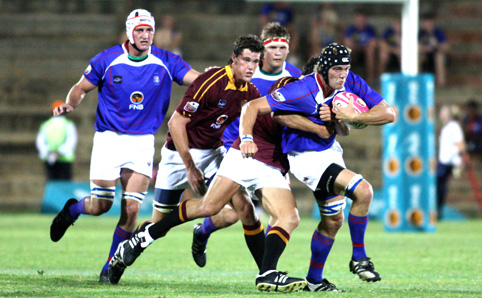 |
|
Captain Willie Britz in action duringthe Shimlas’s battle against the Maties
- Photo: Van Zyl Naudè
|
The second game in the FNB Varsity Cup season ended on a high note for Kovsies’ Shimlas when the try of no. 14, Jamba Ulengo, brought the score against Maties to 21-15. With this game, expected to be the toughest in the season, Shimlas exceeded many expectations.
Dougie Heymans, Team manager for the Shimlas was very excited about the team’s achievements against the Maties. “Everybody knew the guys can play; last week they put unnecessary pressure on themselves.” The team’s excellent defence against the Maties – who is known for their great forward’s game – was the deciding factor in this second game of the season.
Jaco Colyn, who played flyhalf, was announced as man of the match.
Not only did the players play better than last Monday; more enthusiastic students and other supporters from the university community also came to support the Shimlas. With this Madelief was announced as the residence that revealed the best Kovsie spirit, winning themselves a flatscreen television set to the value of R5 000.
Next Monday Shimlas will play against the team of the University of Johannesburg at the UJ Stadium.